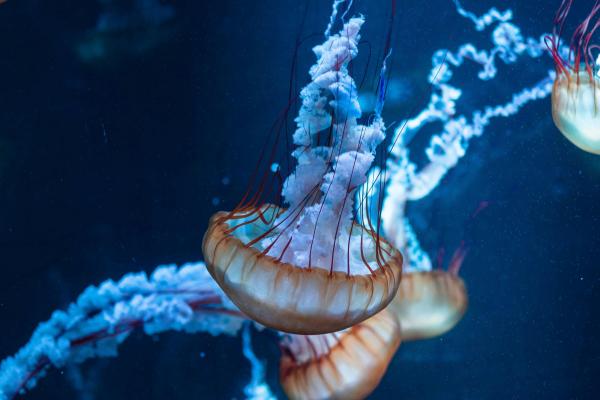Understanding Environmental Effects on Viral Metabolic Reprogramming

The Potential for Enhancing Large-Scale Ocean Geochemistry Models and Addressing Broader Climate Change Impacts
Four years ago, a surprising lab discovery at The Ohio State University revealed that when two different viruses infected ocean bacteria, the resulting organisms, called virocells, functioned based on the viral needs rather than their bacterial origins. Cristina Howard-Varona, a microbiology research scientist, was the study's first author. Now, along with her colleagues, Howard-Varona has extended this work in a new study.
This recent research was conducted under low-phosphate conditions that more closely resemble the nutrient-limited environments found in pockets of the ocean. The study, published recently in The ISME Journal, investigates virocell metabolic reprogramming using a systems biology approach.
Viruses influence microbial systems by infecting hosts, transferring genes, and altering cellular metabolism, thereby affecting nutrient cycles. The resulting virocell diverges from its uninfected counterpart as the virus takes over the cell's machinery for virus production rather than cell replication. The response of virocells to nutrient-limited environments, common in nature, is not well understood.
This study, co-authored by Byrd Center Principal Investigator Matthew Sullivan, a professor of microbiology at Ohio State and co-senior author of both studies, focused on the impact of low phosphate (low-P) conditions on virocells of a marine Pseudoalteromonas host. Viruses that infect and replicate within bacteria are called bacteriophages, also known informally as phages. Researchers used two different phages, HP1 and HS2.
The study revealed a series of nested responses due to the combined stresses of infection and nutrient limitation. Low-P triggered universal cellular responses in both virocells and uninfected cells, such as activating the typical phosphate-stress response and reducing transcription, translation, and extracellular organic matter consumption. Additionally, low-P induced specific responses in infected cells, including enhanced nitrogen assimilation, fatty acid degradation, and reduced extracellular lipid abundance.
Furthermore, the study identified virocell-specific strategies: HS2-virocells increased transcription and ribosomal protein production, whereas HP1-virocells accumulated host proteins, decreased extracellular peptide abundance, and focused on broader energy and resource acquisition.
The findings indicate that while environmental conditions universally affect metabolism, virocells adopt specific strategies to support viral replication under nutrient limitation. This study provides a framework for identifying metabolic strategies of nutrient-limited virocells in natural environments.
Sullivan emphasized the potential of this research to enhance large-scale modeling of ocean microbial systems, which currently often overlook the virocell component. According to Sullivan, to accurately predict how organisms contribute to ocean geochemistry, it is essential to understand how cell populations interact, acquire nutrients, and alter the composition of organic matter, all of which influence climate change and the ocean's response to it. Sullivan, who also holds positions in civil, environmental, and geodetic engineering and is the founding director of Ohio State's Center of Microbiome Science, noted that this understanding is equally crucial for modeling microbes in nutrient-poor soils, where virocells' role in root and crop health remains largely unknown.
Other co-authors include Azriel Krongauz, Natalie Solonenko, Ahmed Zayed, and Subhadeep Paul of Ohio State; co-first author Morgan Lindback and co-senior author Melissa Duhaime of the University of Michigan; Jane Fudyma and Malak Tfaily of the University of Arizona; William Andreopoulos and Tijana Glavina del Rio of the DOE; and Heather Olson, Young-Mo Kim, Jennifer Kyle and Joshua Adkins of the Pacific Northwest National Laboratory.
This work was supported by the U.S. Department of Energy (DOE), the Gordon and Betty Moore Foundation, the National Science Foundation, the National Institute of Allergy and Infectious Diseases, and the University of Michigan discretionary funds.
Read more about this study by visiting Ohio State News.
Access the study by visiting "Environment-specific virocell metabolic reprogramming."
